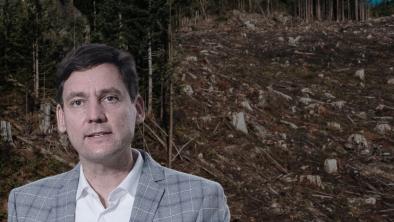Park protection comes at a cost
Victoria Times Colonist

If you're heading out to enjoy B.C.'s park system this week, take a moment to reflect on the fact that the province has made a huge effort over the years to save much of our wilderness.
More than 14 per cent of the province is protected parkland. We have more than 1,000 parks and protected areas. By any measure, those are impressive numbers. In the 99 years that B.C. Parks has been with us, the system has made a tremendous difference.
But have we done enough? John Doyle, the auditor general, is not convinced. He issued a report this week saying that the province does not have a viable plan to conserve the ecological integrity of all that land.
Plans are too often outdated or non-existent, conservation policies are lacking and many protected areas are too small to sustain the species within them.
Doyle's report has been seconded by the Rob Fleming, the NDP's environment critic, and by Gwen Barlee, the policy director with the Wilderness Committee.
"Our parks are starved of funding, park rangers are an endangered species and now we find that the very core of our protected area system, ecological integrity, is being threatened because we have a government that has turned its back on a park system that used to be world famous," Barlee says.
"The B.C. Liberals haven't even done the basic scientific work necessary for informed parks planning and are failing to make and implement plans to stop the decline of species at risk of extinction," Fleming says.
There is no doubt that since the Liberals came to power in 2001, the government's thinking about parks has changed.
As Barlee notes, the government has installed parking meters in 41 popular parks, weakened the Parks Act, changed park boundaries to allow for industrial development, cut the operating budget, reduced the number of park rangers by more than 50 per cent, and eliminated government-funded park interpretive programs.
Parks users have been voting with their feet, it seems. Since 1999, visits to B.C. parks have dropped by more than 20 per cent. In the past couple of years, the provincial government cut the parks budget by almost 20 per cent.
Environment Minister Barry Penner raises a valid point, however: It's nice to protect as much as we can, but it takes money. And there are many competing priorities out there. We have been in a sharp economic downturn. At a time when schools and hospitals are being cut back, it can be hard to justify spending money on a small patch of land in a distant valley that few of us will see.
But our parks and protected areas are vital to our quality of life. They help regulate climate, purify water, prevent floods and erosion, and provide the habitat that allows rare and endangered species to survive.
It is important to protect as much land as possible, but it's also important to see a healthy economy, and to limit the amount of money the government is taking from us. It's a tricky balance -- and it's quite possible that the government could double or triple its spending on parks and still not be doing enough to satisfy everyone.
We also need to be careful what we wish for. If some parks are too small to be useful, that could be seen as a reason to sell them. That thinking would not serve us well.
Doyle is recommending improvements to planning, and wants to see privately owned land added to protected areas. The estimated cost would be $355 million over the next 10 years.
Getting that estimate is a good start. Now we need to find out what the taxpayers think -- because again, it all comes down to priorities.


